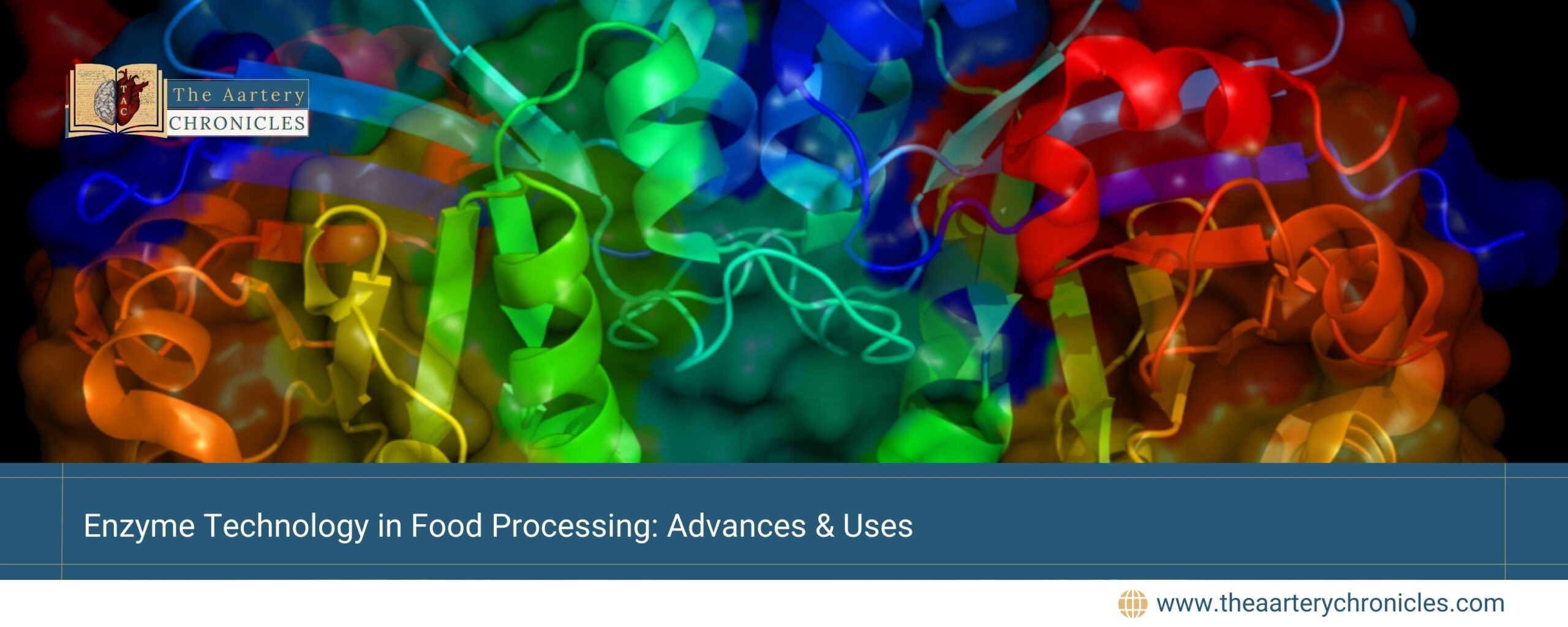

Enzyme Technology in Food Processing: Innovations, Benefits, and Applications
Overview
Humans have been using enzymes for various purposes, including food processing, even before their discovery as catalysts in biological processes. The use of enzymes for processing food began around 600 B.C. Enzymes have significantly contributed to the industries of cheese making, dairy, baking, wine processing, etc.
Microbes are the most important and preliminary source of enzymes utilized in food processing. Other sources include animal tissues, organs, and plants. Recent advancements in genetic engineering and recombinant DNA technology have allowed the generation of enzymes with exceptional qualities, which has had a considerable impact on the food industry.
Introduction
Wilhelm Friedrich Kunhe was the first to use the word ‘enzyme’ in 1877. The word enzyme comes from Greek which translates to ‘in leaven’
Enzymes: Enzymes are biologically derived catalysts with remarkable properties, produced by all living organisms to regulate vital biochemical processes.
Invertase and pectinase are some of the enzymes used in food processing since the 1930s. To produce cheese, chymosin was extracted from the calf stomachs marking the start of the industrial application of enzymes. Enzymes can significantly alter conventional food processing breaking down complex materials into simpler forms within an extremely short time. For instance, enzymes can break down protein, fats, and carbohydrates in food into their respective components within 3-6 hours, however without enzymes this process may require up to 30 years to complete.
Types of enzymes used in food processing
Enzymes enhance flavors, and texture and improve the nutritional value of the food products as well. Several classes of enzymes are used each for a particular function across a variety of food products. Some common types of enzymes in food processing include:
- Amylases – Break down starch into sugars and are mainly used in the baking industry to enhance the quality of bread by improving dough fermentation
- Proteases – Important for protein hydrolysis and meat tenderization.
- Lipases – For fat processing. Lipases are important for producing lipolyzed milk fat and play a vital role in cheese processing.
- Pectinases – Pectinases are primarily used in the beverage industry and winemaking to extract fruit juices, as they enhance both juice yield and clarity
- Cellulases – Mainly used for enhancing texture and balancing viscosity
- Lactases – For producing lactose-free dairy products

Advantages of using enzymes in food processing
Enzymes offer several benefits in food processing from improving quality, and sustainability to enhancing efficiency across various applications. Some of the key advantages include:
- Improving the efficiency of food processing: Enzymes accelerate reactions and speed up the operations of food processing increasing overall efficiency and allowing the production of beverages and food products more quickly. And reducing the time required for production.
- Improved flavor and Texture: Enzymes improve the texture of food products adding value to the products. For instance, the use of proteases to tenderize meat and using amylase in baked food items.
- Shelf Life: Enzymes help increase shelf life by regulating chemical reactions that control microbial growth. This gives the product greater stability reducing spoilage.
- Cost-Effectivity: Usage of enzymes reduces the requirement of chemical additives in turn reducing the production costs and satisfying consumer preferences for natural products
- Sustainability and Health benefits:
- Enzymes are biodegradable and contribute to environmental sustainability by reducing water and energy consumption compared to traditional processing methods.
- Enzymes improve the nutritional value of the products by enabling processes such as lactose reduction in dairy, making these products accessible to lactose-intolerant individuals. They also facilitate the production of low-sodium options, boosting overall health benefits.
Innovations in Enzyme Technology
Novel innovations and advancements have transformed the food industry. Immobilized enzymes, genetically engineered enzymes, and microbial enzyme production are some of the important advancements that significantly contribute to the sustainability, and quality of products.
- Immobilized Enzymes: These are physically or chemically confined within a matrix or solid support. Immobilization improves the reusability and stability of enzymes in processing industries. Immobilized enzymes have extended operational lifespan allowing for continuous use without considerable loss of activity.
- Genetically Engineered Enzymes: Genetically engineered enzymes are produced using several techniques such as gene editing and recombinant DNA technology. These techniques allow precise editing that improves the enzyme activity and stability for different processing conditions.
- Microbial Enzyme production: Utilizing microbes such as yeast and bacteria to produce enzymes has become popular because of the cost-effectiveness and scalability it offers. Genetic engineering of these microbes facilitates the production of high yields of enzymes.
Conclusion
Enzyme technology has significantly transformed the food industry offering solutions for sustainability, efficient production, and improved product quality. The future of enzyme technology promises even greater innovations. With continuous advancements, genetically modified enzymes have the potential to become more resilient to processing conditions. Moreover, lately, with industries focusing on green-label production, enzymes play a crucial role in balancing sustainability, efficiency, and health-conscious food processing.
- THE ROLES OF ENZYME IN FOOD PROCESSING -AN OVERVIEW | FUDMA Journal of Sciences (FJS)
- Enzymes in Food Processing: A Condensed Overview on Strategies for Better Biocatalysts | PubMed Central
- Enzyme Immobilization Technologies and Industrial Applications | ACS Publications
- Applications of Microbial Enzymes in the Food Industry | PubMed Central









